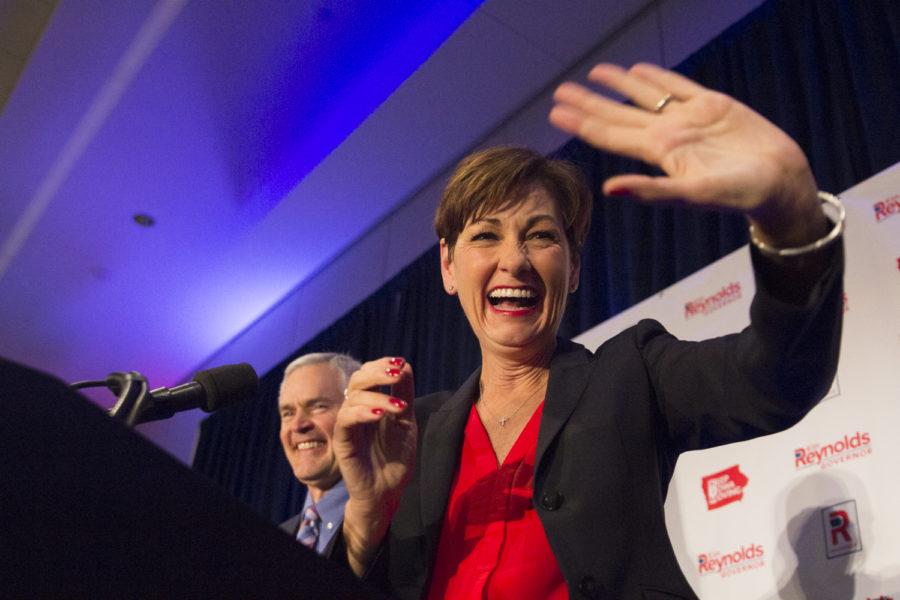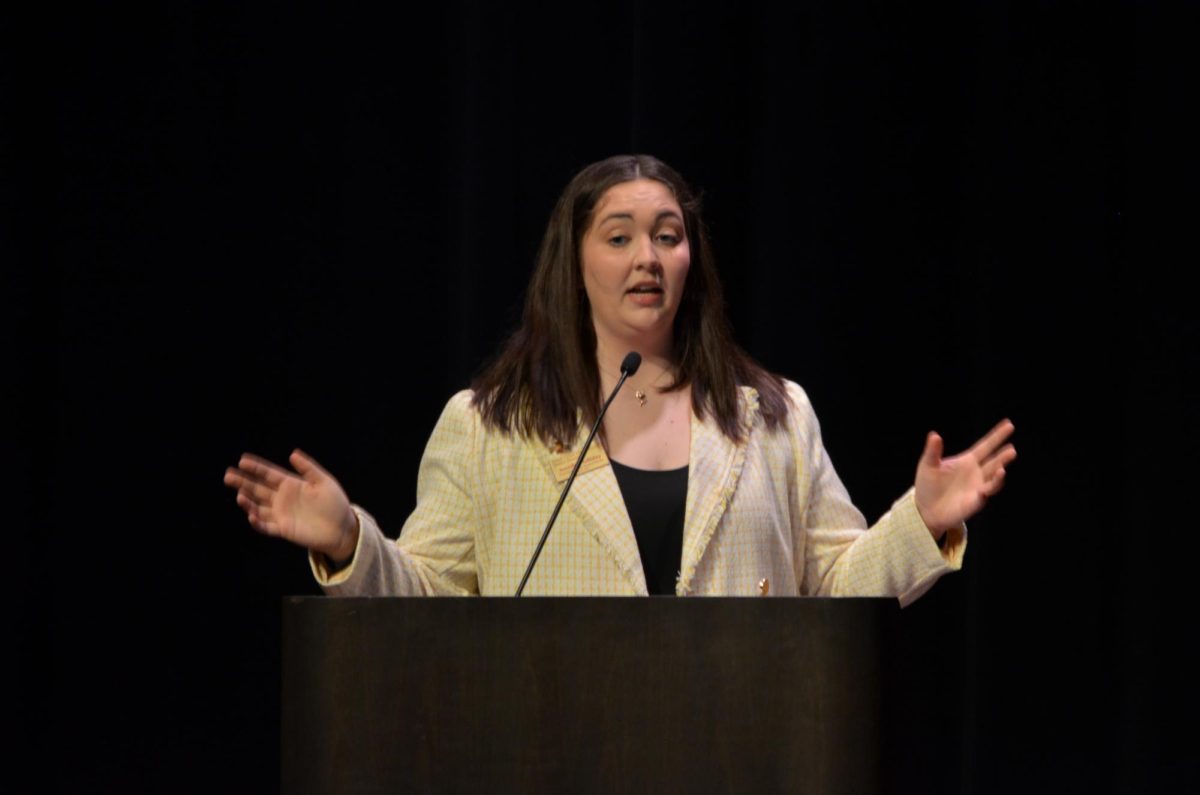It was a record year for women in politics
Kim Reynolds celebrates being the first elected female governor on Nov. 6, 2018. Mike Naig, Republican candidate for Iowa Secretary of Agriculture and Kim Reynolds, Republican candidate for Iowa governor hosted an “Iowa GOP Victory Party” on Nov. 6 at the Hilton in downtown Des Moines.
November 12, 2018
With the House and Senate divided between parties, this midterm election was not a win for Democrats or Republicans, but for the women who were chosen to represent their constituents.
2018 was a groundbreaking year for women in politics. Nationally, 276 women were candidates for seats of power: 16 for governors, 23 for senators and 237 for representatives. 118 are slated to hold seats for the next term. Women also won two-thirds of the seats that the Democrats flipped from previous Republican control.
Zoey Shipley, the president of Iowa State’s Vote Everywhere club, cites this record breaking year to be an inspiration to women of all ages, even if they aren’t interested in politics.
“It just shows to any woman, any little girl, that anything you put your mind to you can do,” Shipley said. “Women have historically been discouraged in getting involved, so I think this is going to show people that women want a place at the table, and they are going to start fighting for it.”
In Iowa, Democrat Cindy Axne from the 3rd District and Democrat Abby Finkenauer from the 1st District flipped two previously Republican seats, and Finkenauer joined Democrat Alexandria Ocasio-Cortez from New York as one of the two youngest female representatives, both age 29.
The Iowa House of Representatives gained five new female representatives, all of whom were Democrats. Previously, the record for women in the Iowa legislature was 35 seats, but in this past mid-term election, that record was surpassed as 45 women were elected, meaning that 30 percent of the 150-seat legislature is made up of women.
“They were pretty much all in the Des Moines-area suburbs and that was kind of consistent with what we saw on the national level, and like it was on the national level that is a consequence of urban women coming out to vote for Democrats,” said Mack Shelly, chair of the political science department at Iowa State.
During the “Year of the Woman” in 1992, 24 women were newly elected to the United States Congress, and that had remained as the record for 26 years. In 2018, however, that record was surpassed by 31 new women elected to represent their states.
Women broke records this year, not only in number of females elected, but in the identities of who was elected. Barriers of age, race, religion and sexual orientation have been pushed through across the United States and even extending to territories of the United States.
Democrats Sharice Davids from Kansas and Deb Haaland from New Mexico won their bids for their state Congress seats, becoming the first Native American representatives for their states, and Davids also became Kansas’ first openly LGBTQIA+ member elected to Congress.
Ilhan Omar, a Democrat from Minnesota, already made history in 2016 when she won a seat in the Minnesota House of Representatives, becoming the state’s first Somali-American legislator. This year, she and Rashida Tlaib, a Democrat from Michigan, became the first Muslim women to be elected to represent their states in Congress. Omar has also become Minnesota’s first woman of color representative.
4,000 miles across the sea, Guam, an unincorporated territory of the United States, has also elected their first female governor, Lourdes Aflague “Lou” Leon Guerrero.
Guerrero served as a long-time Democratic legislator and won the governor’s seat for the Democrats for the first time in 15 years, defeating the Republican incumbent, Ray Tenorio, by over 8,000 votes.
Dianne Bystrom, the director emerita of the Carrie Chapman Catt Center for Women and Politics, said the sudden spike in female winners across the nation may be attributed to who they challenged. A large number of the women, especially in the House, were Democrats running against incumbent male Republicans.
“We know from research conducted in the early 1990s that when women run, especially for open-state races, they have just as good a chance, sometimes even better, to win,” Bystrom said. “So the biggest hurdle so far is convincing women to run. We had a record number of women running for political offices this year.”
















